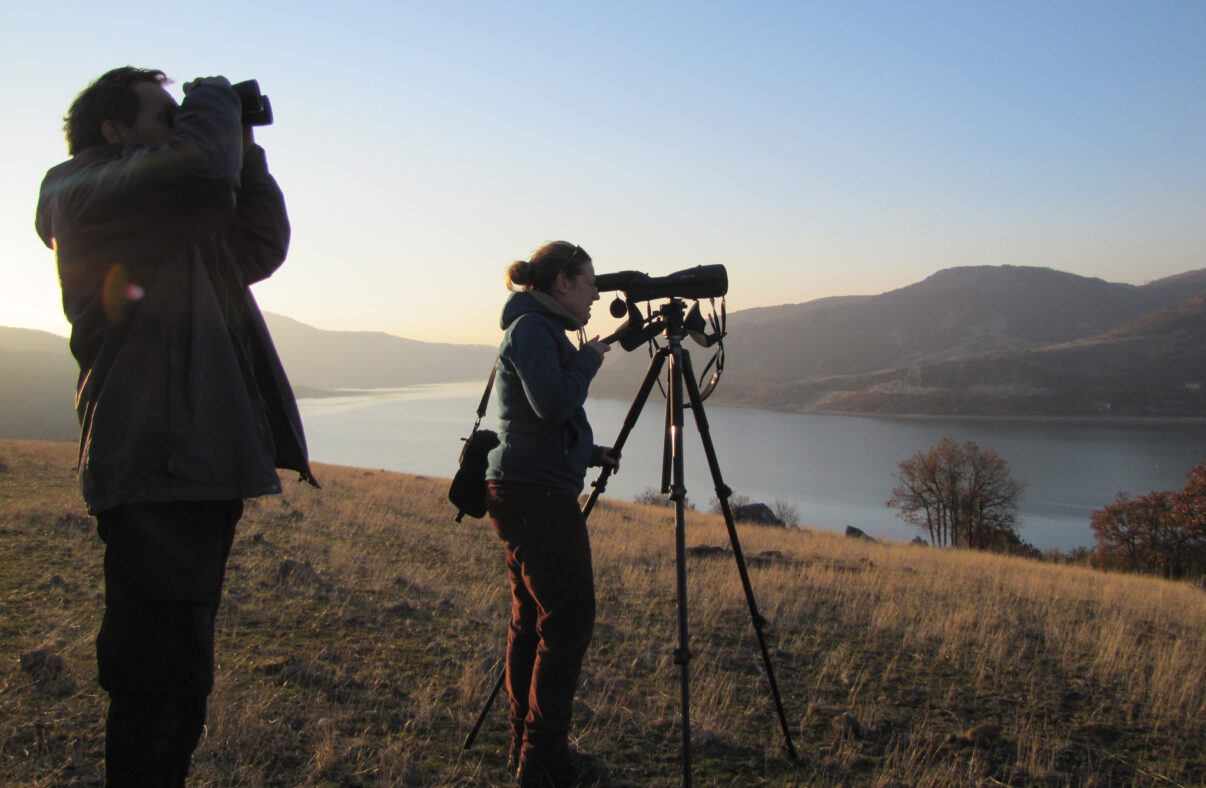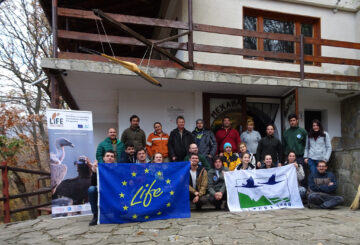The number of griffon vultures in the Eastern Rhodopes continues to grow, shows the annual census of griffon vultures on the Balkan Peninsula. This year, 184 griffon vultures were counted along Arda River in Rhodope Mountains rewilding area, home of the largest colony of griffon vultures in Bulgaria. Last year there were 178 griffon vultures registered. This year number is the highest registered during the annual roost count in the Eastern Rhodopes since 2005.

Since 2005, there is a roost count carried out on the Balkans. The traditional census is organized and coordinated by BSPB in partnership with environmental organizations from Bulgaria, Greece, Serbia and Macedonia. The twelfth consecutive census this year was held on Saturday, November 19, 2016 and was carried out in Bulgaria by 32 experts and volunteers from Rewilding Rhodopes Foundation and the Bulgarian Society for the Protection of Birds (BSPB).

The monitoring is usually carried out at the beginning of the winter season, when is the start of the vulture’s breeding season. It aims to determine the number and age structure of the species population living on the peninsula. We are still expecting census results for the rest of the Balkan countries – Greece, Serbia and Macedonia. Then the experts will be able to establish the status of the population in the region.
In Bulgaria, the annual monitoring also covers the Eastern Rhodopes, Stara Planina and Kresna Gorge. At some of the reintroduction sites, where other local NGOs work on the return of the species, an increase of the roosting vultures number was registered – a total of 123 roosting griffon vultures. This is a good increase as these places have seen 108 vultures last year.
The monitoring takes place in November – December, and the census is carried out within a single day. Teams are visiting all cliffs that have been identified as resting and breeding sites of the vultures. Every cliff face is monitored by one team from a minimum distance of 300 meters. Apart from the number and age of the vultures, the number of tagged individuals and their distinctive features – if present – are also noted. During the monitoring of vultures the number and age of other raptors sharing the cliffs for resting or roosting is also noted. The census starts in the early afternoon and ends a little bit after sunset. It spans over the whole period of daylight.